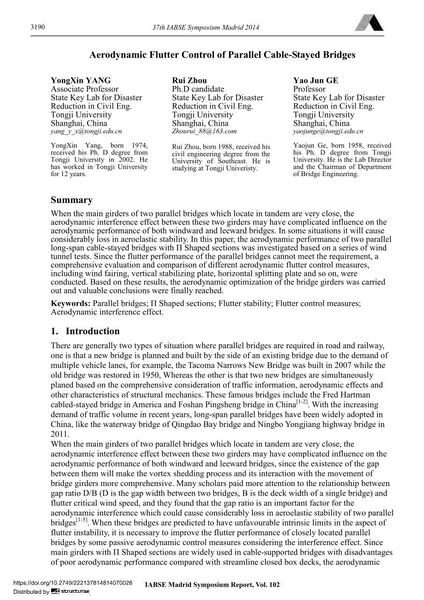Aerodynamic Flutter Control of Parallel Cable-Stayed Bridges

|
|
|||||||||||
Bibliographic Details
| Author(s): |
Yongxin Yang
Rui Zhou Yao Jun Ge |
||||
|---|---|---|---|---|---|
| Medium: | conference paper | ||||
| Language(s): | English | ||||
| Conference: | IABSE Symposium: Engineering for Progress, Nature and People, Madrid, Spain, 3-5 September 2014 | ||||
| Published in: | IABSE Symposium Madrid 2014 | ||||
|
|||||
| Page(s): | 3190-3197 | ||||
| Total no. of pages: | 8 | ||||
| Year: | 2014 | ||||
| DOI: | 10.2749/222137814814070028 | ||||
| Abstract: |
When the main girders of two parallel bridges which locate in tandem are very close, the aerodynamic interference effect between these two girders may have complicated influence on the aerodynamic performance of both windward and leeward bridges. In some situations it will cause considerably loss in aeroelastic stability. In this paper, the aerodynamic performance of two parallel long-span cable-stayed bridges with Π Shaped sections was investigated based on a series of wind tunnel tests. Since the flutter performance of the parallel bridges cannot meet the requirement, a comprehensive evaluation and comparison of different aerodynamic flutter control measures, including wind fairing, vertical stabilizing plate, horizontal splitting plate and so on, were conducted. Based on these results, the aerodynamic optimization of the bridge girders was carried out and valuable conclusions were finally reached. |
||||
| Keywords: |
flutter stability Parallel bridges Π Shaped sections Flutter control measures aerodynamic interference effect
|
||||
